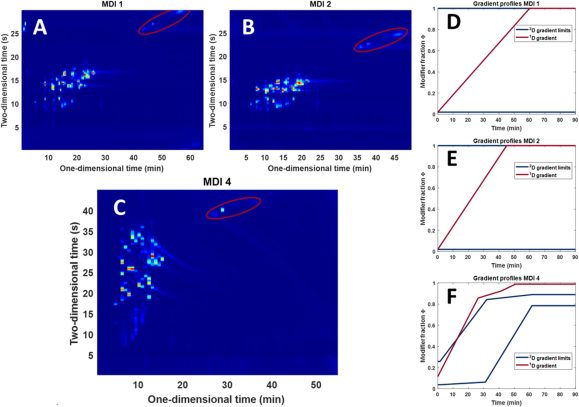Investigating the proteins in biological samples can help us understand and identify diseases and improve the effectiveness of medication. To study proteins in these samples, they are typically digested into peptides and subsequently analyzed by liquid chromatography (LC) hyphenated with high-resolution mass spectrometry (HRMS).
Comprehensive two-dimensional LC (LC×LC) offers increased separation power over traditional LC methods. However, most common gradient designs require re-equilibration of every second-dimension run, resulting in high flow rate operations to limit the empty separation space. This also limits MS sensitivity as flow splitting is required to handle such flow rates.
In this work, we developed an LC×LC method using a so-called parallel-gradient design, which omits the need for column re-equilibration and enables the use of the entire separation space. Moreover, this allows for lower flow rates and maintains the sensitivity for low-abundant analytes. The parallel-gradient design achieved higher surface coverages and sensitivity at lower effective peak capacities. Most importantly, both methods were applied to analyze a Human IMR90 lung fibroblast cell line digest to assess its applicability to real complex samples. The parallel-gradient method was able to identify significantly more proteins than the current state-of-the-art methods while using the same analysis time and at a lower solvent consumption. The applicability of the parallel-gradient design could be improved even further by shortening the modulation times, as it was not limited by column re-equilibration.

The study is a collaborative work done thanks for the contribution of many colleagues and students. The link to the publication is reported below.
https://doi.org/10.1021/acs.analchem.4c02172















